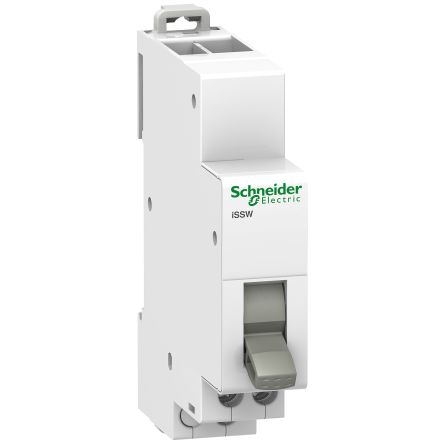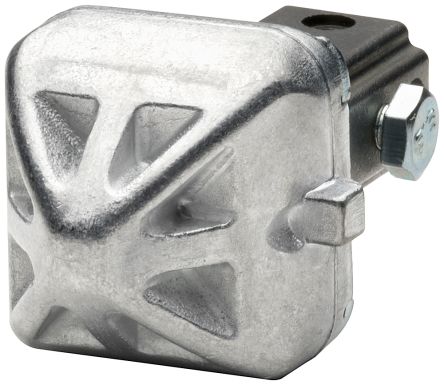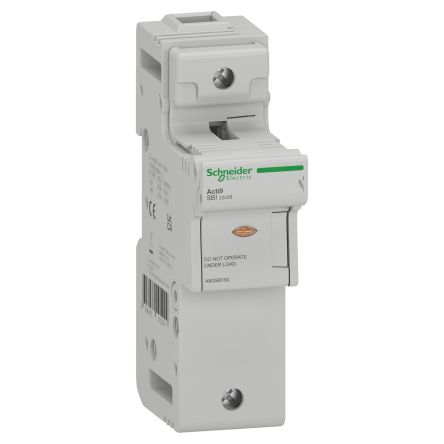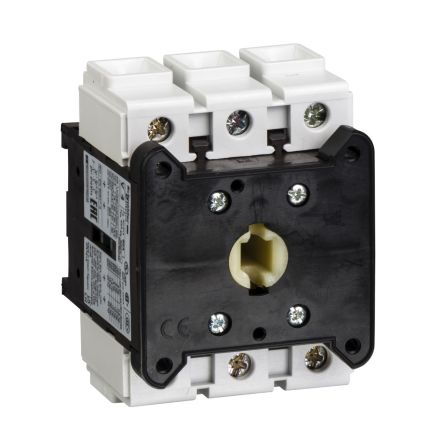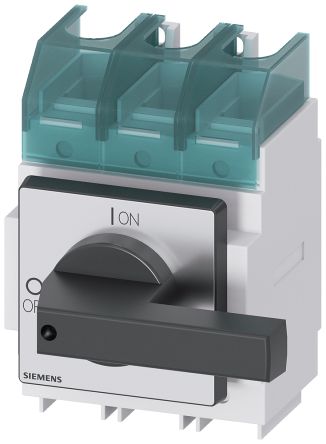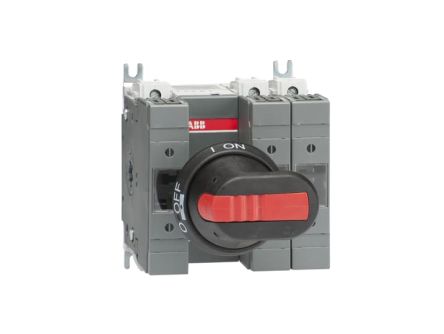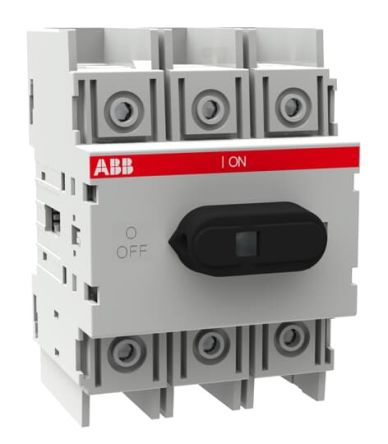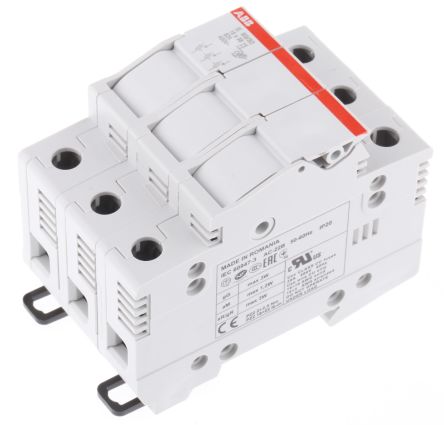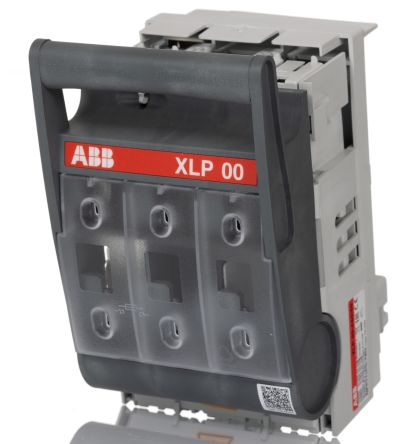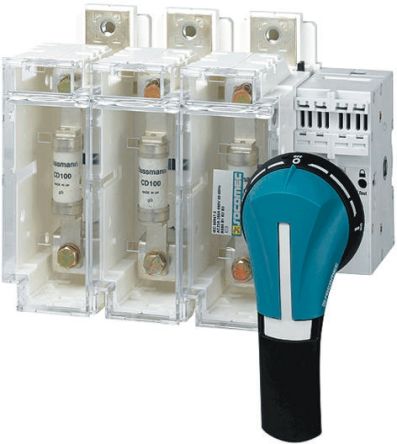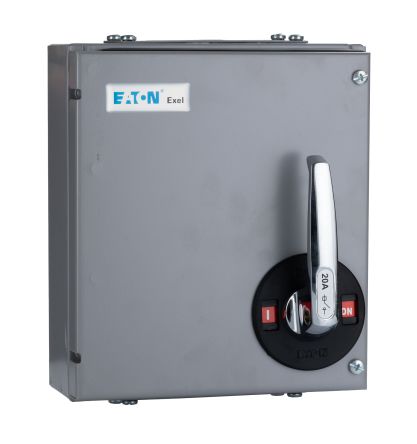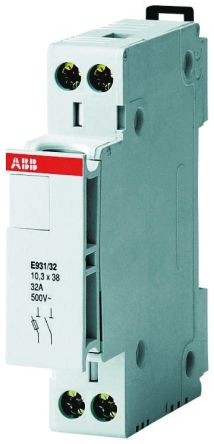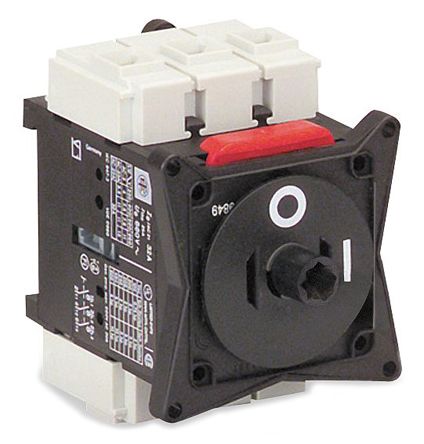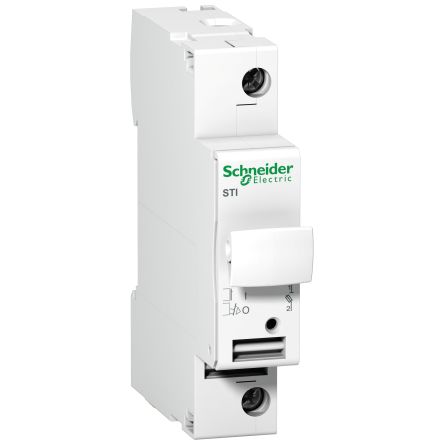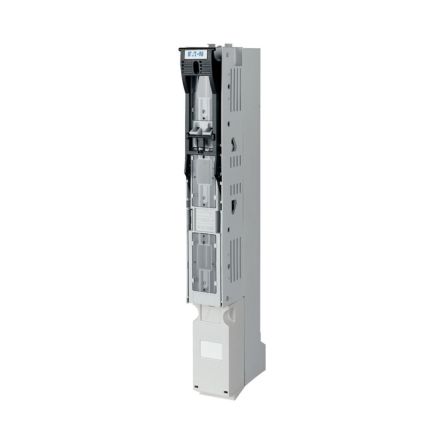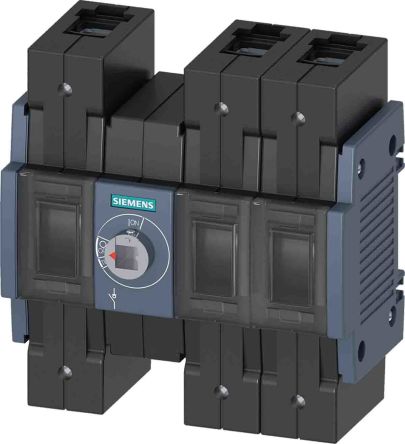- Automation & Control Gear
- Cables & Wires
- Enclosures & Server Racks
- Fuses & Circuit Breakers
- HVAC, Fans & Thermal Management
- Lighting
- Relays & Signal Conditioning
- Switches
- Batteries & Chargers
- Connectors
- Displays & Optoelectronics
- ESD Control, Cleanroom & PCB Prototyping
- Passive Components
- Power Supplies & Transformers
- Raspberry Pi, Arduino, ROCK, STEM Education & Development Tools
- Semiconductors
Fuse Switch Disconnectors
Fused switches disconnectors/switch fused isolators are devices used to ensure that a circuit is completely powered down in order for it to be serviced or maintained. They isolate a given part of the circuit by cutting off its electrical supply, making it safe for service or maintenance. You can find out more in our complete guide to isolators and switch disconnectors.
Fused switches contain multiple fuses inside the same enclosure so that it is easy to select and isolate a particular part of the circuit. For example, an isolator switch can be used in a substation to physically disconnect any circuit when repairs are being carried out.
What are fused switch disconnectors used for?
Fused switches protect workers performing maintenance on part of an electrical circuit as well as preventing damage to the circuit itself. The advantage of using a fused switch over a non-fused switch is that it can provide a higher level of safety compared with unfused disconnectors, as the fuse blows in the event of breaches such as short circuits or over currents. This makes it certain that that part of the circuit cannot have current flowing through it while being worked on.
Types of fused switch disconnectors
Fused switches mainly differ depending on the type of fuses they house, the number of poles they have, and the terminal type.
Advantages of Fuse Switch Disconnectors
- High safety and reliability.
- Top performance.
- Easy installation and commissioning
- Suitable for diverse application
- A high degree of protection
- Suitable for diverse applications
Applications for Fuse Switch Disconnectors
- Construction
- Pharmaceuticals
- Agriculture
- Healthcare
- Education
- Data Centres
- Airports
- Manufacturing
Popular Searches
Related links
- Socomec Fuse Switch Disconnector 200A Max Current
- Socomec Fuse Switch Disconnector 250A Max Current
- ABB Fuse Switch Disconnector 100A Max Current
- ABB Fuse Switch Disconnector 200A Max Current
- ABB Fuse Switch Disconnector 160A Max Current, 160A Fuse Current
- Legrand 25 A SP + N Fused Isolator Switch, 10.3 x 31.5 mm Fuse Size
- ABB Non Fused Isolator Switch 40A Max Current
- ABB Non Fused Isolator Switch 16A Max Current

